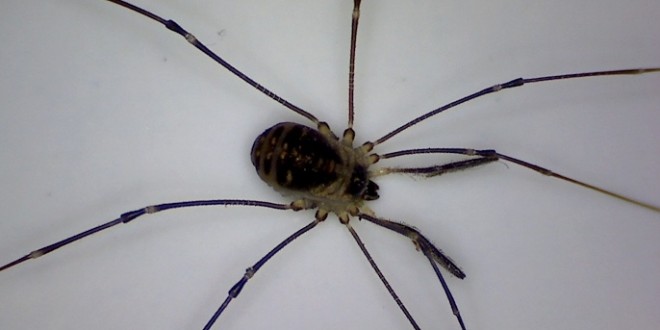Spiderman has the ability to sling webs that allow him to travel through the city at breakneck speeds while sticking to walls. Now, scientists are exploring how to bring Spiderman’s “powers” to life by exploring the properties underlying spider glue’s humidity-responsive adhesion to create “smart adhesives.”
Spiders are some of the most diverse species on our planet, with about 45,000 known species living in a variety of habitats and environments. About 7,500 of those species spin webs to catch their prey. The webs’ spiral-like strands of “capture silk,” in particular, play a key role when it comes to retaining prey.
The capture silk consists of an axial fiber coated with “glue droplets” at regular intervals. This spider glue is unique, because its adhesion increases in response to humidity, and for some species, the adhesion continues to increase up to 100% relative humidity (RH). That is the exact opposite of how synthetic adhesives, such as those on Band-Aids, act on human skin in response to higher humidity–as soon as you sweat, they peel right off.
A group of researchers from the University of Akron and Virginia Polytechnic Institute has explored the properties underlying spider glue’s humidity-responsive adhesion. They described their work and how it might lead to much-sought-after “smart adhesives,” with the ability to function even in high-humidity conditions, during The Society of Rheology’s 87th Annual Meeting, being held Oct. 11-15, 2015, in Baltimore, Md. Rheology is the branch of physics that deals with the deformation and flow of matter.
To begin their research, the scientists measured the adhesion of capture threads from five diverse species of spider. “The habitats of these species ranged from dry to wet and humid, so we measured the adhesion as a function of humidity and used high-speed imaging to quantify the spreading rate of the spiders’ glue droplets,” explained Gaurav Amarpuri of Akron.
Amarpuri is a Ph.D. candidate working with a diverse team of materials scientists and biologists, including Professor Ali Dhinojwalka and Professor Todd Blackledge from the University of Akron in Ohio, as well as Professor Brent Opell from Virginia Tech. Their collaboration is part of the new Biomimicry Research Innovation Center (BRIC) in Akron, which bills itself as dedicated to innovation inspired by nature.
The spreading of a liquid droplet follows the “spreading power law,” in which low viscosity droplets spread faster than high viscosity droplets. The BRIC group used the spreading power law to calculate spider glue viscosity as a function of humidity. “We discovered maximum glue adhesion at the humidity levels at which the spider usually forages,” said Amarpuri. “This is intuitive, but beautiful to observe in data.”
Under the microscope, the group was also able to view spider glue peeling and clearly see that its extensibility increases with humidity. They observed glue viscosities that showed “changes of over five orders of magnitude with a shift from 30 percent to 90 percent relative humidity–the equivalent of a solution changing from the consistency of peanut butter to that of olive oil,” Amarpuri pointed out.
The viscosity of glue at humidity of maximum adhesion was “very similar, even though that humidity varied from 30 percent to 90 percent among the five species studied,” Amarpuri said. “This shows the unique ability of spiders to change or ‘tune’ their glue viscosity to maximize adhesion and prey capture.”
The mechanism behind spiders’ ability to adapt to the humidity within their local environment and to change the viscosity of their web glue may help to develop next-generation smart adhesives. “Our study highlights viscosity modulation as a potent tool that various organisms use to derive different functionalities,” Amarpuri noted. “Further work to quantify bulk rheological changes within biological materials may result in a new class of smart materials.”
The researchers have begun zeroing in on spider glue’s proteins and salts. Salts are low molecular weight organic compounds, which are hygroscopic (able to attract and hold water molecules), and although the proteins are relatively similar, the salts vary significantly in ratio and composition by species. “So now we’re investigating the role of salts in controlling viscosity and adhesion,” Amarpuri added.
Agencies/Canadajournal
 Canada Journal – News of the World Articles and videos to bring you the biggest Canadian news stories from across the country every day
Canada Journal – News of the World Articles and videos to bring you the biggest Canadian news stories from across the country every day




re: image on “Spiders are teaching us how to make better glue, research”. It has been a long time since I took invertebrate biology in University, but this image does not appear to be a spider. I believe it is a “harvestman” or Opiliones. I found the same image on Wikipedia under “Mitostoma chrysomelas”.
I found this article interesting, but it unfortunately gave me gas pains.